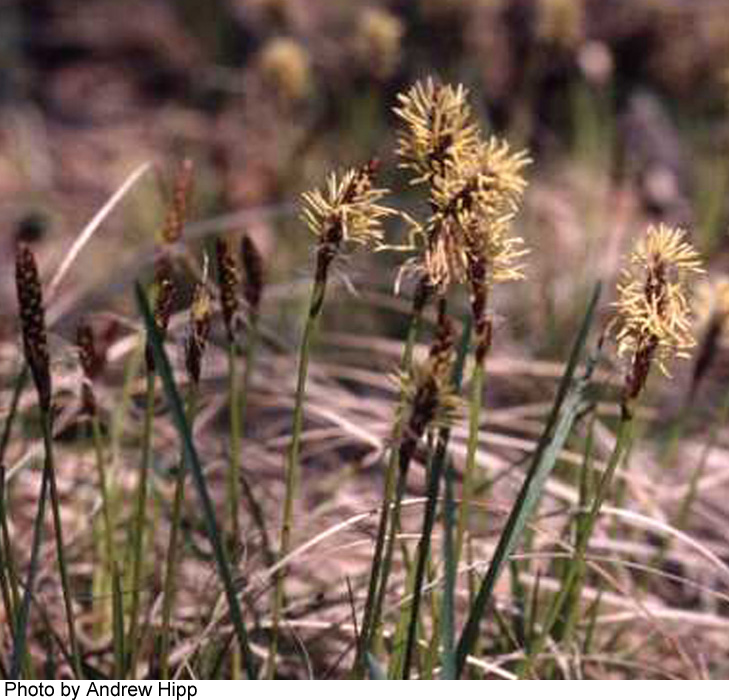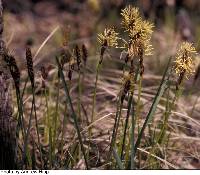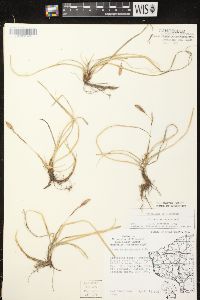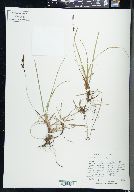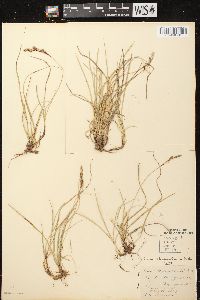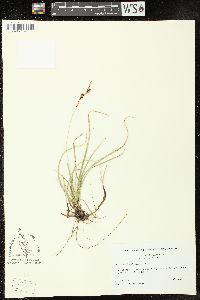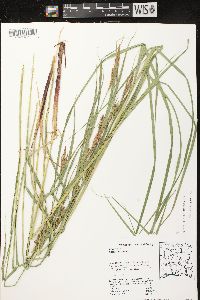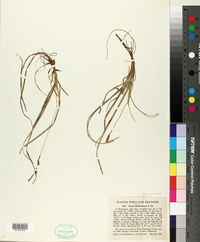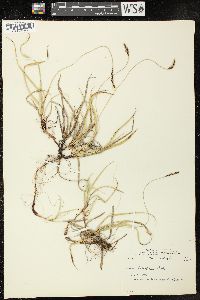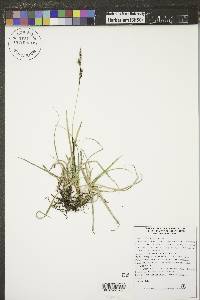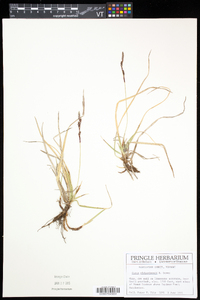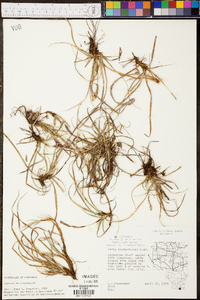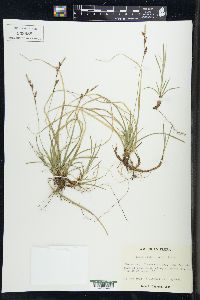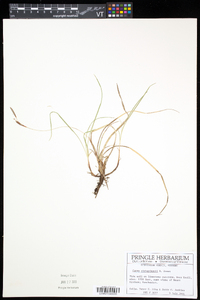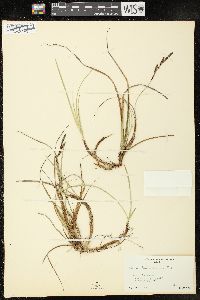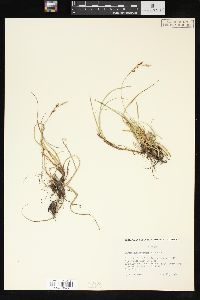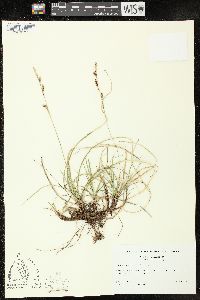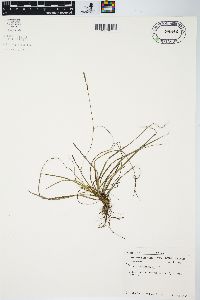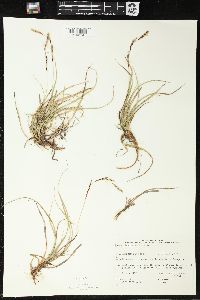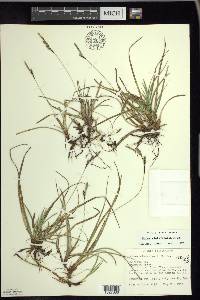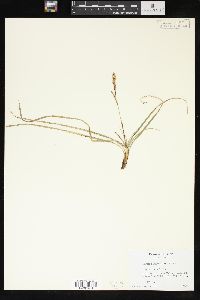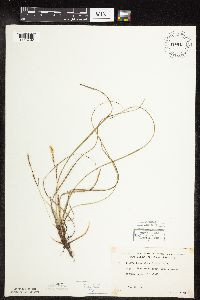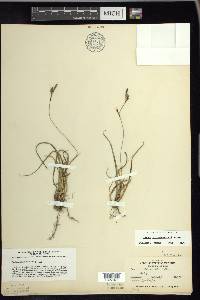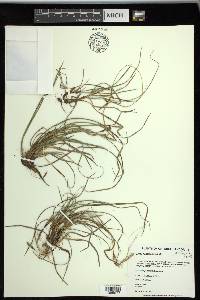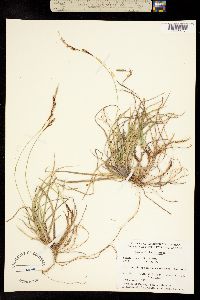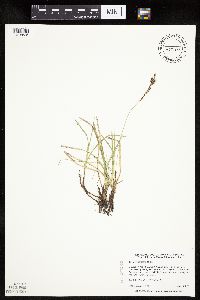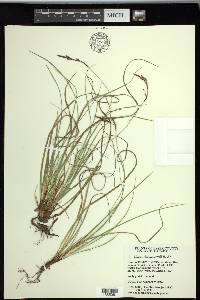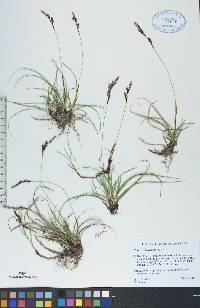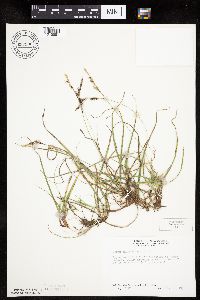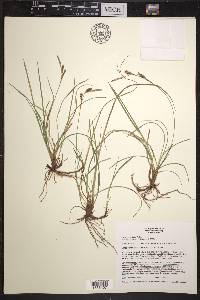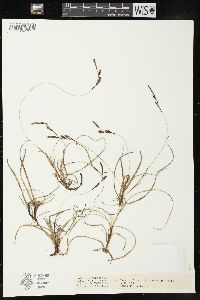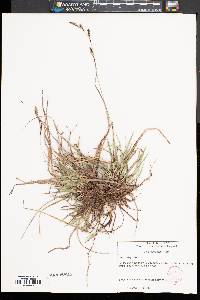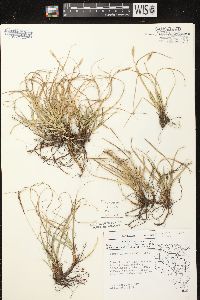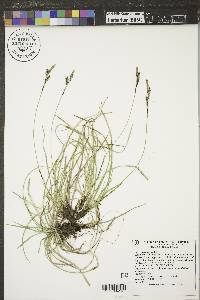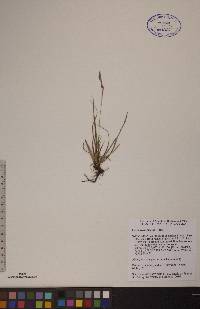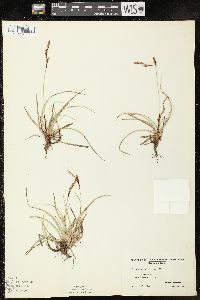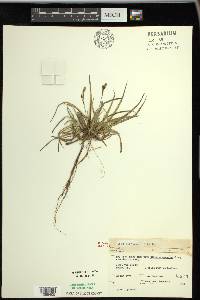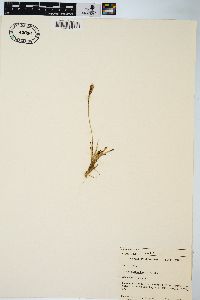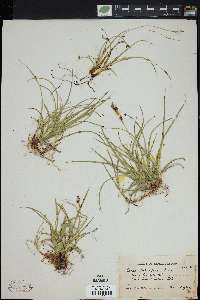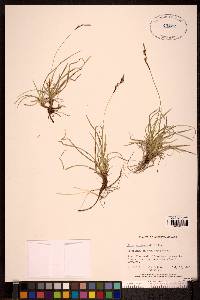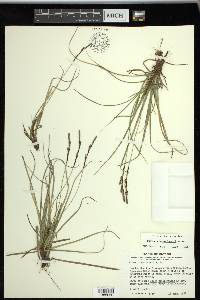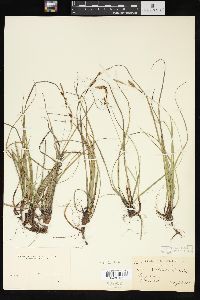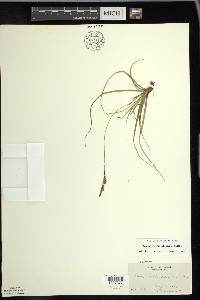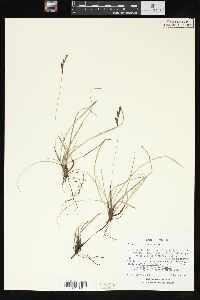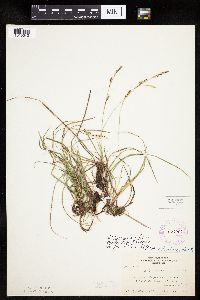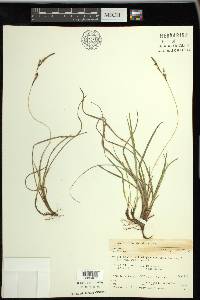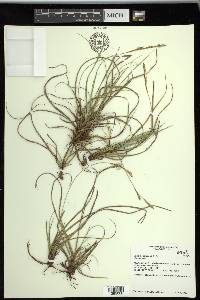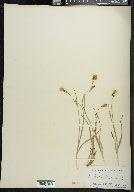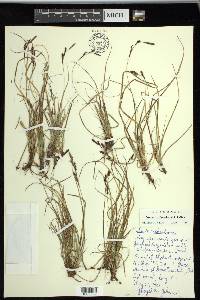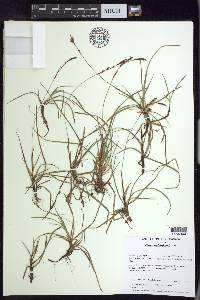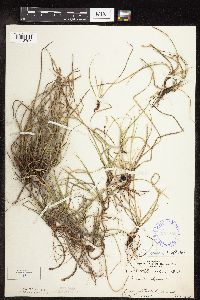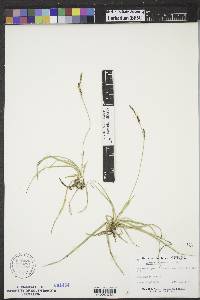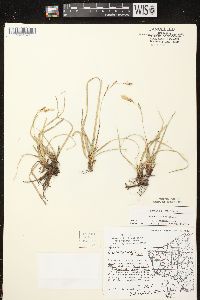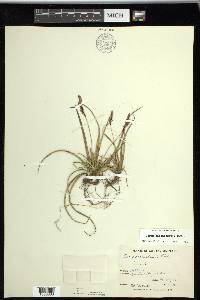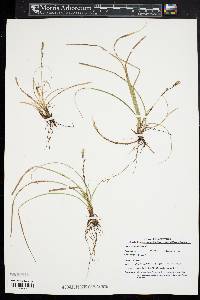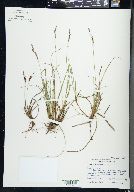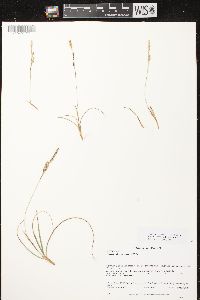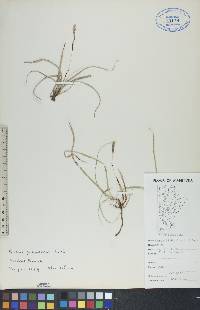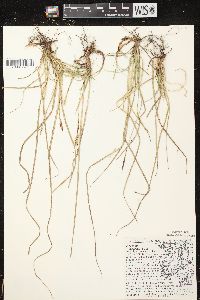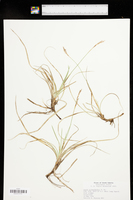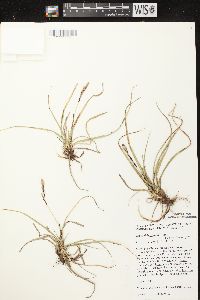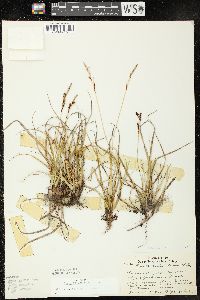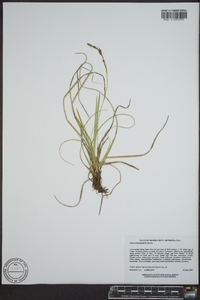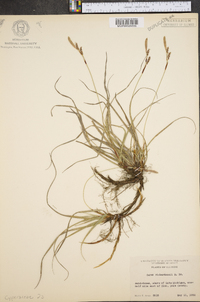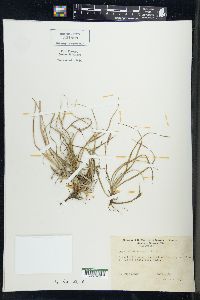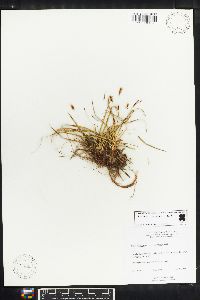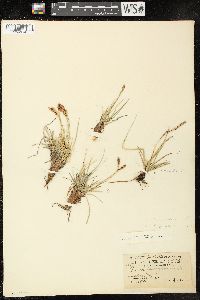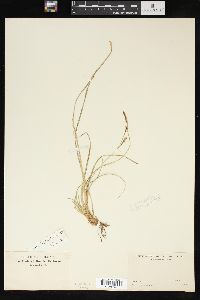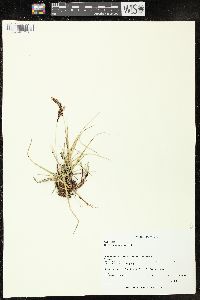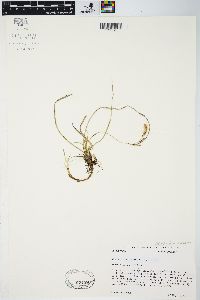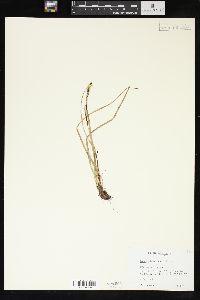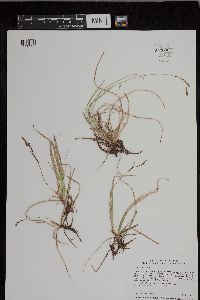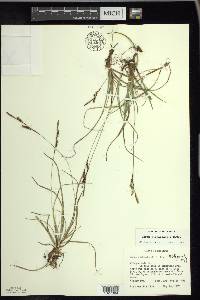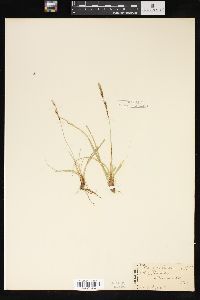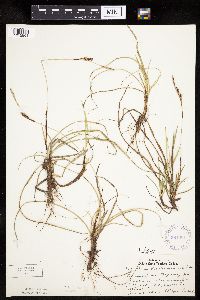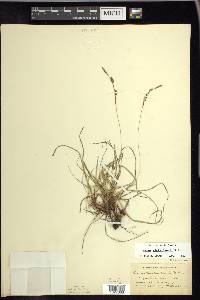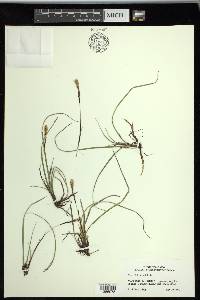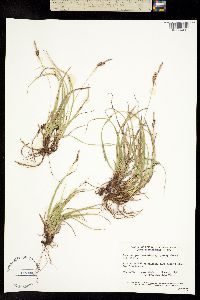
|
|
|
|
Family: Cyperaceae
Richardson's Sedge
|
Plants loosely cespitose, long-rhizomatous. Culms 14-32 cm. Leaves: basal sheaths dark purplish to reddish brown; blades mostly basal, pale green, shorter than culms, thick, 0.9-3.3 mm wide. Inflorescences: peduncles of proximal pistillate spikes to 7 cm; peduncles of terminal staminate spikes 3.3-15.7 mm; proximal bracts long-sheathing; pistillate spikes 2-4, emerging from cauline nodes, widely separated, ascending, ovoid to ellipsoid or short-cylindric; terminal staminate spikes 17.4-23 × 2.5-3.8 mm. Scales: pistillate scales reddish brown, ovate, apex acute to obtuse, glabrous; staminate scales reddish brown, ovate to obovate, margins silvery-white, apex acute to short-acuminate, scarious. Anthers 2.1-2.6 mm. Perigynia obovoid to oblanceoloid, 2.4-2.9 × 1-1.3 mm, base tapering, pubescent with straight white hairs; beak straight, 0.2-0.5 mm. Stigmas 3, flexuous, thin, strongly papillose. Achenes ellipsoid to obovoid, 1.7-1.8 × 1.1-1.2 mm. 2n = 52. Fruiting late spring-summer (late May-mid Jul). Vernally moist (often drying later in the season), open woodlands, alvars, floodplain edges, prairies, and basic and acidic outcrops; 50-1400 m; Alta., B.C., Man., N.W.T., Ont., Que., Sask.; Ill., Ind., Iowa, Md., Mich., Minn., N.Y., N.Dak., Ohio, Pa., S.Dak., Vt., Wis., Wyo. Carex richardsonii is common on the Canadian prairies and in open montane woodlands east of the Cascades. Farther east, it is a rare plant of alvars, tall-grass prairie remnants, and postglacial shorelines, such as those of Lake Iroquois (in Ontario and New York) and Lake Barlow-Ojibway (in Quebec). It is most closely related to, and perhaps the ancestor of, C. concinnoides. Chromosomal data and phylogenetic analysis may help to test that contention. The long, dark reddish brown sheaths are a conspicuous field mark. Late in the growing season, the leaves often turn dark wine red. This species tends to have low seed set.
Loosely rhizomatous; fertile stems 1-2.5 dm, scabrous-puberulent above; lvs mostly basal, thick and stiff, 1-2 dm נ1.5-2.5 mm; terminal spike staminate, linear, 12-20 mm, its scales rounded or blunt, with narrow purple center and broad hyaline margins; anthers 2-3.5 mm; pistillate spikes 2(3), erect, approximate or slightly separate, short-peduncled, 1-2 cm, their scales ±acute, wider than and equaling or more often surpassing the perigynia, brown-purple with hyaline margins, perigynia 10-25, obovoid, 2.5-3.5 mm, roundly angled on the back, keeled on the lateral angles, thinly pubescent; basal spikes none; achene sharply trigonous; 2n=52. Dry or rocky upland woods; Vt. to Alta., s. to D.C., O., Ind., Io. and S.D.; rare and local in the east. Fl early, fr May. Gleason, Henry A. & Cronquist, Arthur J. 1991. Manual of vascular plants of northeastern United States and adjacent Canada. lxxv + 910 pp. ©The New York Botanical Garden. All rights reserved. Used by permission. From Flora of Indiana (1940) by Charles C. Deam Known in Indiana only from the dunes at Pine, Lake county. Pine is now within Gary on the east side of Clark Street, an eighth of a mile south of Lake Michigan. Here on a sandy knoll at the edge of a marsh, Carex Richardsonii is associated with Andropogon scoparius, Castilleja coccinea, Erigeron pulchellus, Senecio pauperculus var. balsamitae, Lithospermum canescens, Potentilla fruticosa, Carex umbellata and C. aurea, Liatris spicata, Betula papyrifera, Pedicularis canadensis, Krigia biflora, Rhus trilobata var. arenaria, R. radicans, R. vernix, Arabis lyrata, Hypoxis hirsuta, and Koeleria cristata. This is one of the rarest sedges in the eastern states where it is very local in its distribution (although its known range seems to indicate that it occurs generally at or near the Niagara Escarpment) and its season is very brief. After flowering it matures its fruit rapidly and then completely withers away. At Pine it is in its prime about May 30. Of the six known collections made from this station four were made on May 29 (1897; 1900; 1904, and 1935), one on May 12 (1877) and one on June 13 (1935), but at the last date the majority of the perigynia had fallen and the plants were already badly withered. ...... Indiana Coefficient of Conservatism: C = 10 Wetland Indicator Status: UPL |
This project was made possible in part by the Institute of Museum and Library Services [MG-70-19-0057-19].
Powered by Symbiota

